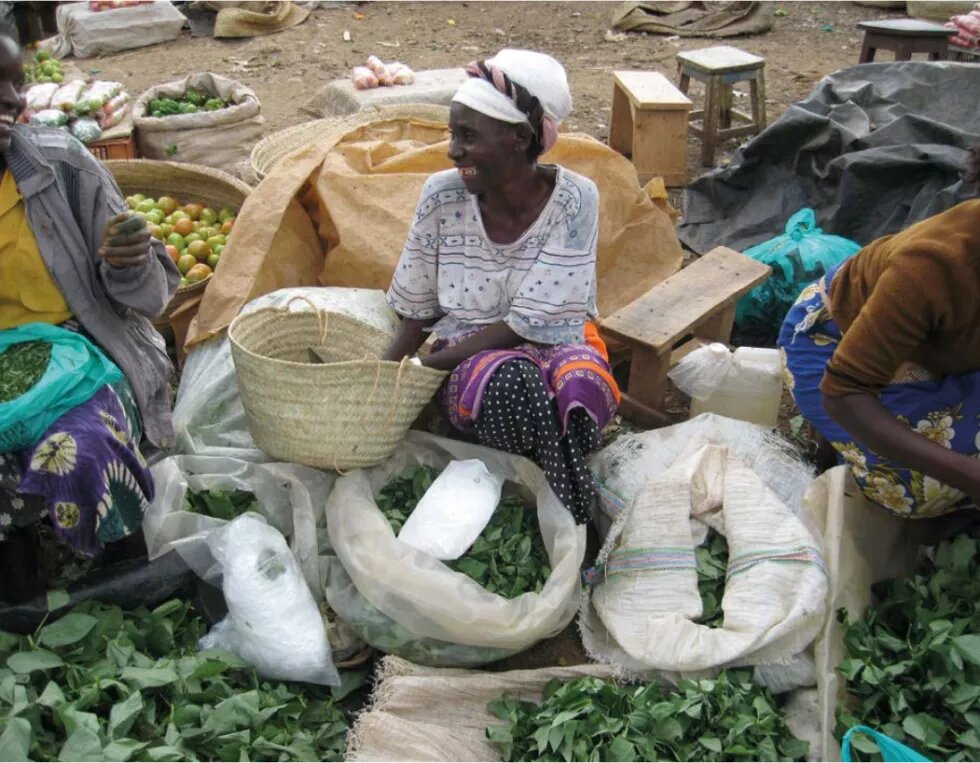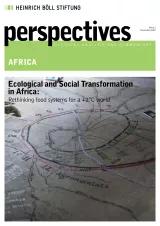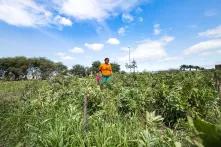
If global poverty had a face, it would be a woman’s. Women account for half of the world’s population, but 70 percent of its poor (UNDP, 1995). In 1978, Dianne Pearce coined the term “feminisation of poverty” to indicate that women experience poverty at rates that are disproportionately higher than those of men. The meaning of this term can be taken in three ways: that women have a higher incidence of poverty compared to men; that women’s poverty is more severe than men’s; and that, over time, the incidence of poverty among women is increasing compared to men (Catagay, 1998).

If poverty in Africa had a face, it would be a woman’s. The roots of poverty for African women are found in a myriad of interrelated issues, including restricted property rights, weak governance and frequency of civil conflict. With regard to major productive assets, such as land or cattle, women’s property rights are weakly defined, and a combination of custom and laws restricts their ability to own and manage land in many countries (McFerson, 2010). Weak governance interacts with traditional patriarchal structures and customs to perpetuate women’s poverty by denying them property rights and the use of essential economic assets, perpetuating a system in which African women have diminished citizenship, which is in turn reflected in gender-based violence. Yet women are the main cultivators of food, undertaking about 90 percent of the work of hoeing and weeding, 80 percent of the work in food storage and transportation, and 60 percent of the work in harvesting and marketing (IFPRI, 1995).
If poverty in Kenya had a face, it would be a woman’s. According to the Kenyan Institute of Economic Affairs (IEA), although the overall poverty incidence declined from 56 percent in 2000 to about 47 percent in 2005/06, the poverty headcount was higher among women in both rural and urban areas (50% and 46% respectively). The poverty level for female-headed households (50%) was slightly higher than male-headed households (48.8%) and, although poverty prevalence among all socioeconomic groups in urban areas was lower than that for rural areas, female-headed households exhibited higher poverty incidence in both rural (50%) and urban (46.2%) areas (vis-à-vis male-headed households, which had poverty incidence rates of 48.8% and 30% respectively) (IEA, 2008). Women and children are more vulnerable to both absolute and food poverty (both of which occur mainly in female-headed households) because tradition gives them less decision-making power over assets than men, while at the same time limiting their opportunities to engage in remunerated activities and acquire their own assets (Blackden and Bhanu, 1999).
Agricultural Challenges
Agriculture is a key pillar of the Kenyan economy. The agriculture sector directly contributes approximately 25 percent of our annual GDP and accounts for 65 percent of Kenya’s total exports. It is the primary source of livelihood for the majority of the Kenyan population by way of its contribution to food security, income, employment creation and foreign exchange earnings. Small-scale agriculture and pastoralism account for about 42 percent of the total employment (UNEP, 2014). While 80 percent of the rural population relies on smallholder farming for their livelihood, this labour is provided disproportionately by women, despite them not having ownership and control of the farms they work on. Women provide 80 percent of farm labour and manage 40 percent of the country’s smallholder farms, yet they own only roughly 1 percent of agricultural land and receive just 10 percent of the available credit (KNBS, 2017a).
Kenya is a particularly drought-prone country – only 11 percent of the country’s landmass receives high and regular rainfall. The other 89 percent (29 of 47 counties) is classified as arid and semi-arid land (ASAL), where annual rainfall is low. ASAL counties are home to about 36 percent of the population, 70 percent of the national livestock herd and 90 percent of wildlife (GOK, 2018). Despite the aridity of the land, Kenya still relies on rain-fed agriculture, as opposed to irrigation, for 75 percent of total agricultural output (UNEP, 2014).
Drought is a key challenge to the achievement of food security in Kenya as it frequently leads to famine. Biamah (2005) observes that rain-fed crop farming in the semi-arid areas has a 25–75 percent risk of crop failure, while the arid regions have a 75–100 percent risk of crop failure due to drought. To make things worse, drought events associated with climate change and climate variability have become more pronounced in Kenya, adversely affecting agricultural production (UNEP, 2007).
Women’s Food and Nutrition Insecurity
We are what we eat, and women simply aren’t eating enough. More than 16 percent of Kenyan women live in households that go without food at least once a week (NGEC, 2016). Pregnant and lactating women are most affected by food insecurity. Women are generally considered lower priorities for household food intake in drought situations in ASAL regions, with men and children given higher precedence. Women and girls are also responsible for water collection, fetching water twice daily for between 30 minutes and two hours each day. This strenuous work creates a high demand for calories, which is frequently not adequately met. The longer trips in search of water during drought also mean that women and girls are more exposed to sexual, domestic and street violence as well as prostitution (Dometita, 2017).
Kenyan women’s right to food is secured in Article 43(1)(c) of our Constitution, which states that every person has the right to be free from hunger and to have adequate food of acceptable quality. Since we know that women face challenges peculiar to them, it is surprising that insufficient focus is given to achieving food security for all women. Existing policy, such as the National Food and Nutrition Security Policy (NFNSP) (GOK, 2011), provides a progressive and detailed framework for the realisation of the right to food and food security. It recognises that young women and girls are vulnerable to iron, folate and other micronutrient deficiencies, and also that hunger reduces school attendance (more for girls than boys) and impairs learning capacity.
However, the NFNSP’s greatest concern with women’s needs is related to maternal and newborn nutrition. It sets out a typical poor-nutrition scenario that applies to many women in sub-Saharan Africa, including Kenya: a woman enters pregnancy already undernourished, suffering from or developing iron-deficiency anaemia or other micronutrient deficiencies. Her poor micronutrient status may lead to adverse effects on foetal development, such as brain and neural-tube defects (respectively related to iodine and folate deficiencies). Poorly nourished women often give birth to low birth-weight infants, who start life at a disadvantage that is likely to continue to affect their nutritional status and development in infancy, childhood, adolescence and into adult life.
Proposed legislation, such as the Food Security Bill (2017), only makes specific provision for the intersection of food security and gender when it comes to pregnant and nursing women who are food-poor. The Bill states that every woman has the right to adequate food during pregnancy and lactation. But what about all the other times of a woman’s life?
Patriarchal Norms and Institutions
This gap fits directly into patriarchal norms that find women valuable only when they give service to the patriarchy – in this case, when procreating and caregiving. Patriarchal norms and institutions also underlie women’s hunger and poverty. They are why women work so hard but have so little to show for it. In patriarchal societies, the allocation of opportunities and resources is based on gender: women simply do not have the same access that men do. Social patriarchal norms dictate who works on farms (women) and who reaps the reward (men); who owns the land (men) and who tends it (women); who eats first (men) and who eats last (women).
In addition to food poverty, women also experience time poverty arising from the expectation that they will contribute their time and labour to (typically) unpaid domestic work. This reduces the time they have available to participate in more economically productive work, again rendering them unable to take full advantage of economic opportunities and participate in income-generating activities. It also impedes their ability to expand their capabilities through education and skills development (Catagay, 1998).
Women in Kenya are socially, politically and economically excluded because of their gender. Kenya’s gender-equality index rating, where 100 represents full gender equality, is 38 (NGEC, 2016). The index measures three aspects of human development: reproductive health, empowerment, and economic participation, all of which are directly affected by food insecurity. To fix this, we need to expand women’s access to assets, opportunities and income. Women are the key to eliminating hunger and poverty.
To shift old norms and beliefs, we must invest more in the civic education of women and society at large on the rights of women. The Constitution of Kenya (2010), the Matrimonial Property Act (2013), and the Marriage Act (2014) have improved women’s property rights, thereby increasing their status and bargaining power within the household and community. They also provide greater incentives to adopt sustainable farming practices and invest in natural resource management (IFPRI, 2005). However, the legislation does not address customary restrictions on women’s land ownership and control, nor does it provide a framework to increase women’s awareness of their rights and to support their ability to meaningfully challenge past and present injustices. The state must also take measures to achieve gender equality in both the private and public sectors. Men are employed at double or more the rate of women in all sectors, excluding the education and service sectors (KNBS, 2017b).
We also need to ensure that women have public and political representation to advocate for their rights, including the right to food. Women’s representation still falls short of the constitutional requirement that no more than two-thirds of the appointees of elective or appointive bodies shall be of the same gender. Currently, women comprise less than one-third of the personnel in the majority of such offices, including the cabinet, the National Assembly, the Senate, the diplomatic corps, as well as governors, deputy governors, sub-county commissioners, Supreme Court judges, Kadhis, chiefs and assistant chiefs. The only bodies that currently meet the constitutional requirement are principal secretaries, county commissioners, High Court judges, magistrates, practising lawyers and members of county assemblies (KNBS, 2017b).
Lastly, we need to ensure that women have access to education, income, assets such as land and cattle, expanded opportunities and, most importantly, to food security. Educating women is a key method for boosting agricultural productivity as well as income. If women farmers are given the same levels of education, experience, and farm inputs as their male counterparts, they increase their yields for maize, beans, and cowpeas by 22 percent. Simulations using data from women farmers in Kenya suggest that yields could increase by 25 percent if all girls attended primary school (IFPRI, 2005).
As a society, we have to place women front and centre in our efforts to eliminate hunger and poverty. Women are the key. It’s time we stopped biting the hand that feeds us.
References
Biamah, E.K. (2005). Coping with Drought: Options for Soil and Water Management in Semi-Arid Kenya. Retrieved 2 December 2018 from http://library.wur.nl/WebQuery/wurpubs/fulltext/40497
Blackden, C. and Bhanu, C. (1999). Gender, Growth, and Poverty Reduction. Retrieved 3 December 2018 from http://documents.worldbank.org/curated/en/677841468767650869/pdf/multi-…
Catagay, N. (1998). Gender and Poverty. United Nations Development Programme: Social Development and Poverty Elimination Division. Retrieved 1 December, 2018 from http://www.pnud.org/content/dam/aplaws/publication/en/publications/pove…
Dometita, M. (2017). Beneath the Dryland: Kenya Drought Gender Analysis. Retrieved 3 December, 2018 from https://reliefweb.int/report/kenya/beneath-dryland-kenya-drought-gender…
Government of Kenya (GOK) (2018). ASAL Classification. Retrieved 2 December 2018 from http://www.devolutionasals.go.ke/county-information/
Government of Kenya (GOK) (2011). National Food and Nutrition Security Policy. Retrieved 30 November 2018 from https://extranet.who.int/nutrition/gina/en/node/11501
Institute of Economic Affairs (IEC) (2008). Profile of Women’s Socio-Economic Status in Kenya. Retrieved 30 November 2018 from https://ke.boell.org/sites/default/files/profile_of_womens_socio-econom…
International Food Policy Research Institute (IFPRI) (2005). Women: Still the Key to Food Security: Looking into the Household. Retrieved 3 December 2018 from https://reliefweb.int/sites/reliefweb.int/files/resources/AF1568DC0555A…
International Food Policy Research Institute (IFPRI) (1995). Women: The Key to Food Security: Looking into the Household. Retrieved 2 December 2018 from https://core.ac.uk/download/pdf/6289051.pdf
Kenya National Bureau of Statistics (KNBS) (2017a). Economic Survey 2017. Retrieved 3 December, 2018 from http://www.devolutionplanning.go.ke/images/hb/Economic Survey 2017.pdf
Kenya National Bureau of Statistics (KNBS) (2017b). Women and Men in Kenya Facts and Figures 2017. Retrieved 3 December 2018 from https://www.knbs.or.ke/download/women-men-kenya-facts-figures-2017/
McFerson, H. M. (2010). Poverty Among Women in Sub-Saharan Africa: A Review of Selected Issues. Journal of International Women’s Studies, 11(4), 50–72. Retrieved 1 December 2018 from http://vc.bridgew.edu/jiws/vol11/iss4/4
National Gender and Equality Commission (NGEC) (2016). Status of Equality and Inclusion in Kenya. Retrieved 2 December 2018 from http://www.ngeckenya.org/Downloads/Status%20of%20Equality%20and%20Inclu…
United Nations Development Programme (1995). Human Development Report 1995. Retrieved 1 December 2018 from http://hdr.undp.org/sites/default/files/reports/256/hdr_1995_en_complet…
United Nations Environment Programme (UNEP) (2014). Green Economy Assessment Report – Kenya. Retrieved 2 December 2018 from http://www.greengrowthknowledge.org/sites/default/files/downloads/resou…
United Nations Environmental Programme (UNEP) (2007). Preparing for Drought in Eastern and Southern Africa. Retrieved 2 December 2018 from https://www.iisd.org/pdf/2007/prepare_climate.pdf



